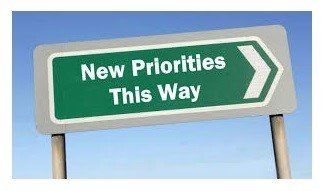Salary Benchmarking Data
Jane Baalam
May 8, 2018
Two cautionary tales:
Last night I was catching up on some of my reading, held over while I had a few days off. I found this blog I did a while back, and thought I would post it again now as it is relevant to some work I have been doing with a prospective new client.
At the time of writing this, I noted two cautionary tales from fellow reward practitioners. One was a reminder that sometimes managers/staff and clients, only hear what they want to hear and therefore you should “cover your back” and always reiterate what was said in writing. Sad, but sometimes true.
The other, was a reminder that numbers and statistics are easily skewed – and it is important to understand what is going on behind the scenes. Lies, damned lies and statistics? I particularly liked the example that if a multi-millionaire enters a coffee shop, the average earnings of everyone in that shop probably increases sufficiently to make them all millionaires. One reason why medians are a better choice than averages.
I am great believer in providing a broad brush of evidence on pay related matters, but I have also always reminded my clients that pay data comes in a variety of forms and felt it was worth reiterating this now:
Pay benchmark surveys
– unless it’s a fast-turnaround survey, this is historical data based on what organisations paid some months ago, or even longer. Depending on how frequently the data is published, and how much the market has progressed, it can be relevant to forecast this data forward using an appropriate multiplier (earnings growth maybe) – but not over long periods.
Recent adverts
– this is what I call aspirational data. The rates that applicants want to earn when they are looking for a new post, and also, the rates that organisations are willing to offer the right applicant. This information can be volatile because it is not always what current incumbents are actually earning.
Which leads me to - Current incumbent data
– this is information from individuals who are currently undertaking the same/similar roles. It may come from within your organisation, or from other data sources available to your data providers (current client databases etc), or from applicants doing similar jobs.
This got me wondering – perhaps unwisely
- If you are confining your pay data collection to just one of these sources, then would it perhaps be best to choose it based on what you are paying your employees for? Should increases based on last year’s performance relate to last year’s data? Should Increases based on targets and expectations be based on recent adverts? And of course, current incumbent data is most likely to set you somewhere in between. I should add, that I am not advocating this as a reward process as it is not as cut and dried as this. I just pondered the concept.
I would prefer to help my clients come to their pay related decisions by providing data from a variety of sources. However, the client does have the choice in the end.









